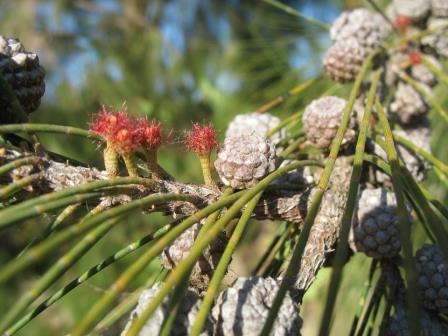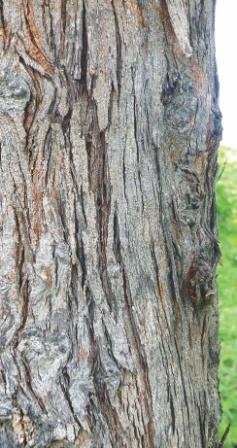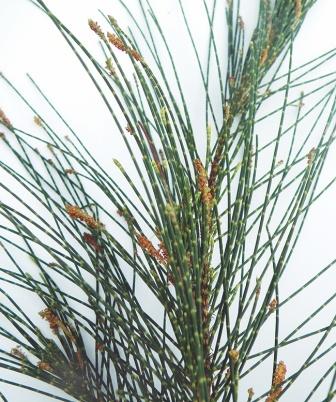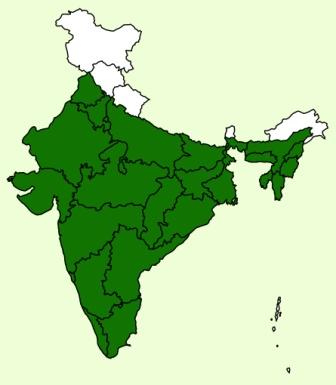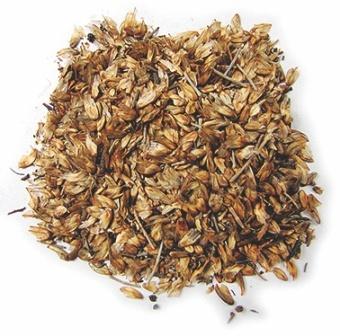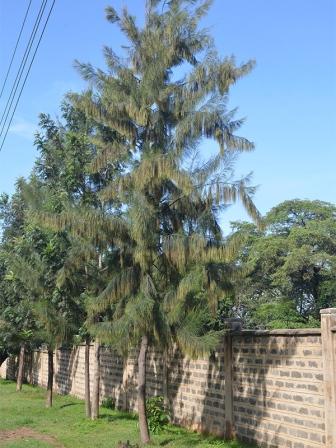Natural Regeneration :
- Natural regeneration is poor.
Artificial Regeneration :
- Propagated by Nursery raised seedling and clones
Seed collection and Storage :
- Casuarina seeds are small consisting 5 to 6 lakh seeds per kg.
- Germination is generally around 30% and about 30,000 to
- 100,000 seedlings are obtained from a kg of seed depending upon source of seed and nursery efficiency.
Seed Treatment :
- Seed treatemnt is not necessary
Nursery Technique :
- Seeds are sown in raised mother beds
- In each bed about 250 g of seeds are evenly spread by mixing with fine sand.
- They are overlaid with a thin layer of sand.
- The sand bed is covered with rice straw to prevent washing off of seedlings while watering.
- A suitable repellent is applied along the periphery of the bed to prevent ants removing the seeds.
- Seeds start germinating from the 5th day and the straw is removed on the 7th day.
- They are grown in the mother beds for the next 3 to 4 weeks.
- After 4 weeks when the seedlings attain 8 – 10 cm height they are transferred to polythene bags.
- Soil (2:1:1) are also added to increase nutrient availability and water holding capacity.
- Growing seedlings in polybags and root trainers is better than bare root seedlings especially for planting in rain fed areas.
- Seedlings raised in Root trainers establish well in plantations and record vigorous growth in the first year.
- Polybags (size: 15 x 7 cm) filled with a potting mixture of sand, farm manure and soil in a ratio of 2:1:1 are suitable for raising casuarina seedlings.
- Seedlings may attain plantable size within 2 months but can be maintained for another 4 to 6 months.
Vegetative propagation:
- Selected plus trees can be propagated by rooting of young shoots (‘sprigs’).
- Such plants produce uniform superior growth in plantations.
- Sprigs collected from selected trees are trimmed to 8-10 cm long and washed in a 5% solution of fungicide like Bavistin.
- The lower portion of the shoot is treated with a rooting hormone, Indole butyric acid (commercial name: Seradix BTM).
- The treated cuttings are placed in root trainers containing coir pith and kept in mist chamber or propagation chambers made of polythene sheets.
- Rooting starts in 15 to 20 days and then transplanted into polybags or root trainers and grown in the same way as seedlings.
Plantation technique :
- Nursery raised seedlings are planted during onset of monsoon season. Where irrigation is available, it is recommended to plant one month before the rain and provide water once or twice a week.
- This will help the plants to establish well before the arrival of monsoon and grow faster than those planted during the rain.
- Land must be preferably disc ploughed twice.
- Pit size for planting is 30 cm3.
- The recommended spacing for realizing full potential of genetically improved planting stock is 1.5 x 1.5 m.
- Add a basal dose of 10 g of superphosphate per pit before field planting of seedlings.
- Application of ant termite solution (e.g. chlorophyriphos 1ml per litre of water) may be needed in red soils or where the problem has been encountered before.
- This may not be necessary in sandy soils in coastal areas.
- If no rain received immediately after field planting of seedlings, watering in alternate days is necessary for the first two weeks.
- The frequency may be reduced gradually to once or twice a week depending upon local conditions.
- Casualty replacement should be taken up only up to one month after planting.
- Four weedings needs to be carried out at 3, 6, 9 and 12 months or till the canopy close whichever is later.
- Two pruning’s need to be taken up at 12 and 24 months.
- Fertilizer application is not necessary after planting if the land is fairly fertile.
- In low-nutrient soils DAP 100 kg per acre may be applied between 12 and 24 months.
Care & Disease Control :
- Pruning of side branches is usually carried out once in 6 months.
- The common insect problem in casuarinas plantation is attack by the stem borer.
- Affected trees are also prone to breaking at the point of infestation during heavy wind.
- Chemical control of this insect is difficult since it resides within the tunnel.
- Insect attack can be prevented by planting varieties that are unaffected by the insect.
- Wilt or blister bark disease causes drying up of trees followed by large scale death.
- Affected trees show symptoms of drying of leaves followed by ‘blisters” on the main stem.
- At advanced stages these blisters burst open releasing black spores.
- The disease is not considered as a serious problem in plantations because it usually occurs in plantations older than 4 years age.
- There is no effective control measure once the infection occurred but removing and burning the infected tree can prevent further spreading of the disease.
Irrigation :
- Drip irrigation
- Sandy area - watering isto be done till monsoon.
- In High rainfall area, irrigation is not necessary.
- Watering done once in five to ten days
Recommended Harvest :
- The commonly followed rotation period is 4 years with irrigation and 6 years under rain fed conditions.
- But the duration varies greatly in different areas and between farmers.
- Wood production varies greatly across locations, cultivation techniques adopted and age at which harvested.
Yield :
- Plantations with irrigation and fertilizer application yield 100 to 150 tones of air dried wood (up to 20 cm girth) per hectare (40 to 60 tons per acre) in 4 years.
- Under rain fed conditions an average yield of 75 to 100 tonnes per hectare is obtained in 6 years (30 to 40 tons per acre) depending upon soil quality and amount of rainfall during the cultivation period
Agro Forestory :
- Groundnut, water melon or pulse crops in the first year well before the tree crown starts closing in and cause shade effect to agriculture crop.
Major uses :
Wood:
- The tree yields a heavy hardwood with an air-density of 900-1000 kg/cubic m.
- The wood is used for house posts, rafters, electric poles, tool handles, oars, wagon wheels and mine props
Pulp wood:
- The wood is used to produce paper pulp using neutral sulphate and semi-chemical processes, and as a raw material for rayon fibers.
Market details :
- Approximately Rs.6000-7000/ton*
*Subject to change according to market demands


